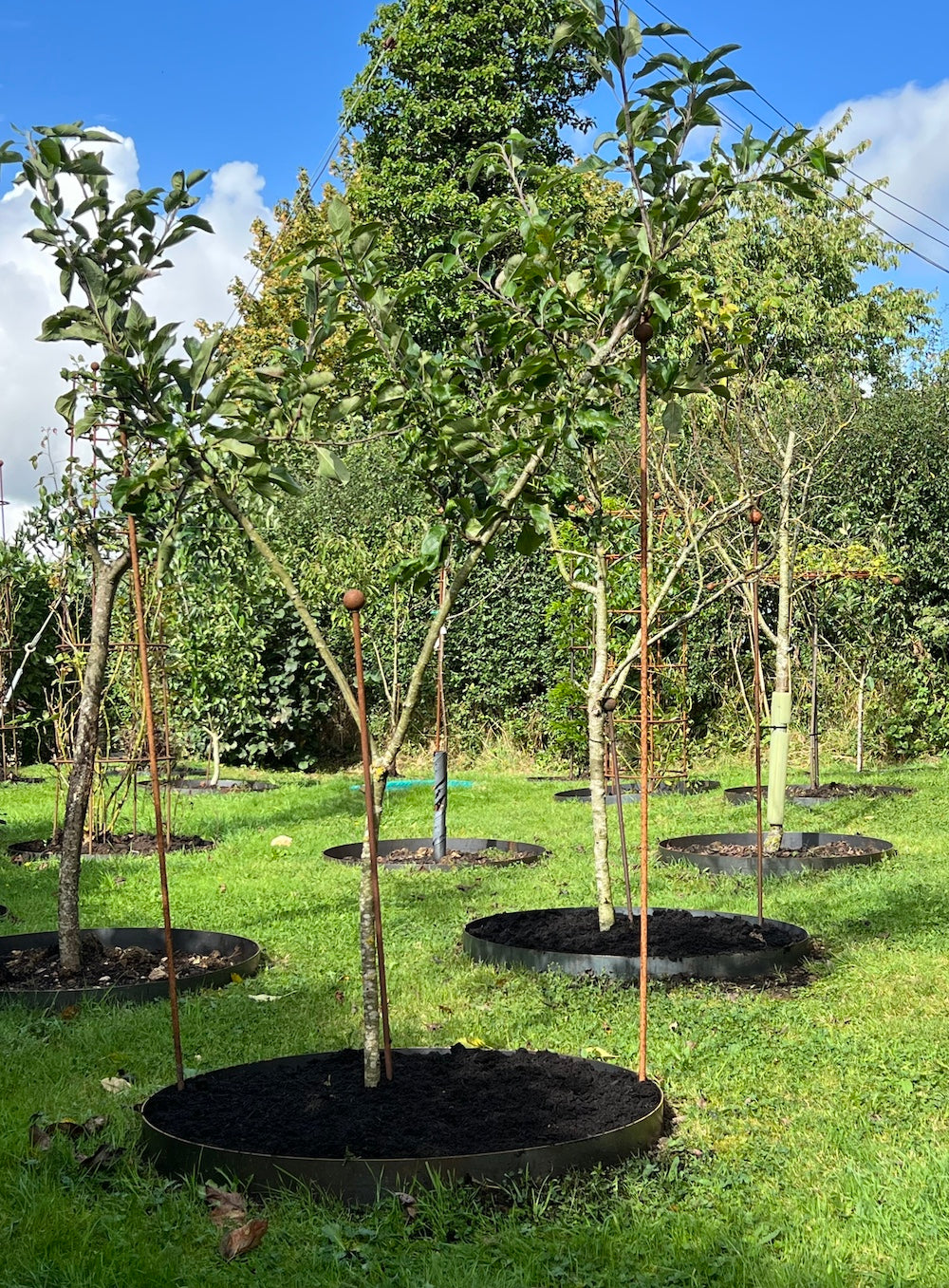
In the garden
SEO SpaceIt’s time to begin clearing up the garden. I want to leave plenty of food and shelter for birds and insects but plants like nepeta and geranium ‘Roxanne’ have sprawled despite all my attempts to contain them and the top growth needs cutting back and composting.
I will leave the top growth on penstemons and gauras (now renamed Oenothera) to protect them from cold but will gather up and compost rotting leaves and stems. I’ve made note of some perennials (phlox paniculata ‘Blue Evening’; astilbe and, inevitably, nepetas) that need dividing and replanting or giving away and I can begin to get these tasks done before the soil cools – I could do it in spring but want to make room for more bulbs when I have reduced the size of clumps.
I am mulching the trees in the orchard where we have installed our new edging rings. This has always been an area of the garden that lacked definition because I use it as a trial area for new supports, such as our wisteria column. Putting rings round the trees and climbers has suddenly given the area definition. It will be easier to keep the edges neat; to water and mulch the trees and I shall continue to plant the rings with spring bulbs (I plant out the pots of narcissi that I have in the house early in the year and the beds have gradually filled with ‘free’ flowers).

Edging rings which can be fabricated either welded or open (to be put around established trees)

The Wisteria column, a new product produced for RHS Wisley, planted last spring
I always mark where I have planted bulbs with a short stake – as the beds have filled it becomes all too easy to forget where the clumps are. I also tend to leave in the stakes supporting clumps – once I have hammered them firmly into our stoney ground I am reluctant to repeat the task every year and they are attractive in themselves. This year I am using our multi-ball stakes on big clumps such as campanula lactiflora and phlox (I was surprised to read that phlox likes damp conditions, no wonder it loves the courtyard garden which sits in water for much of the winter)
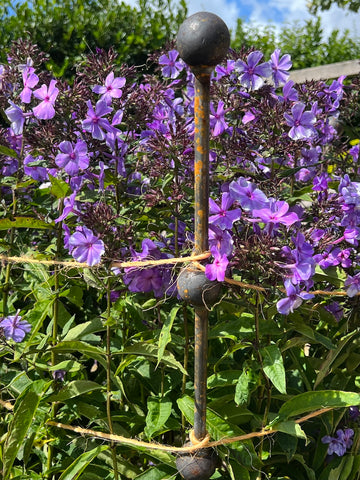

Our new multi-ball stakes are ideal used in 3’s and 5’s on big clumps
One of our friends has a newly planted garden where a combination of new topsoil and warm weather has made the grasses and thalictrum head for the skies! A combination of tall stakes and multi-ball stakes seems to be holding them in place.
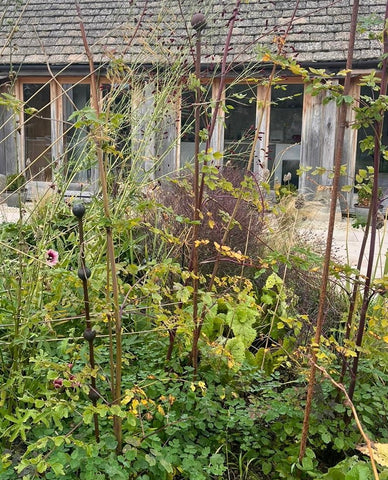
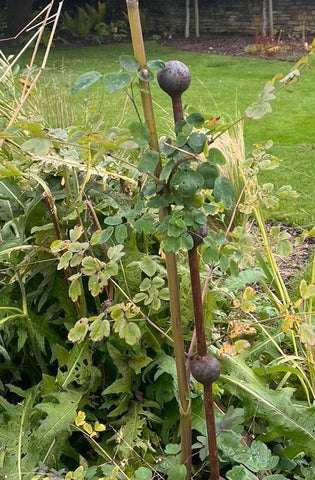

A combination of tall and multi-ball stakes hold the grasses and plants against the westerly winds.
Last week we delivered five raised vegetable beds to a client who has kindly sent photographs of them in situ – we, and he, are delighted with the result. The beds are 2.4m long, 1.4m wide and 400cm high without a base and with a folded lip. They are sitting where the previous wooden beds had rotted, and the mature soft fruit trees already look established. Over time they will develop a rusted patina and will last a lifetime.

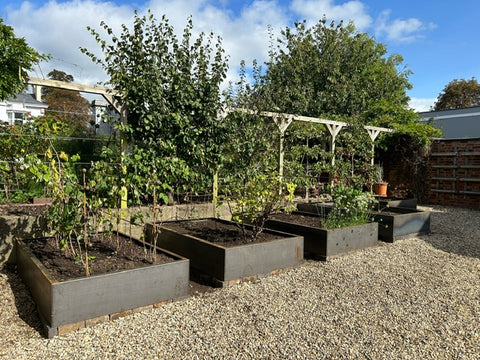

Raised steel beds give definition to the vegetable plot
We’re continuing to plant trees wherever we can and next time I shall be looking at small trees and shrubs that give value in a garden.
